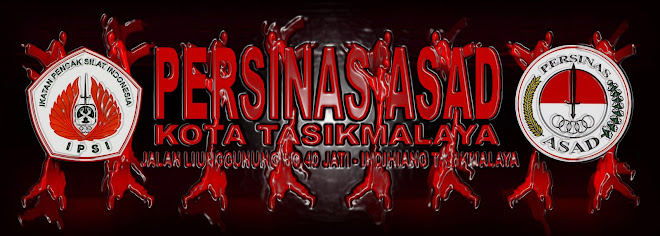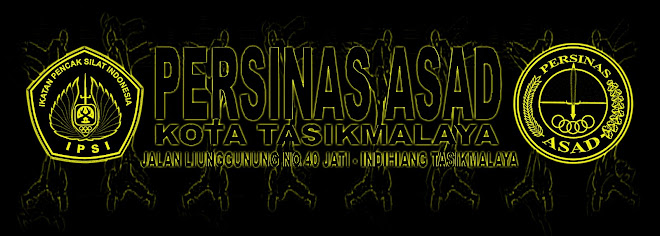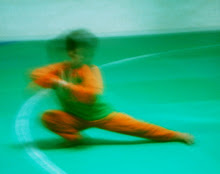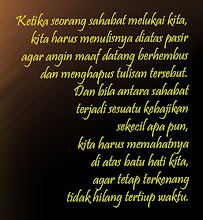General presentation:
Kujang (pron. "koo-jaang.") is old traditional knife of Indonesia, a typical weapon that originates from the Sundanese region called West Java, Indonesia.
Lacking the proper English equivalent for this we have used the term, "sickle," eventhough its form somewhat deviates from the true shape of a sickle. Neither does it resemble the "scimitar" which curves convexly. In Indonesian a sickle is actually called "chelurit." The Javanese living in the eastern half of the Java island refers to the kujang as "kudi." To those who are uninformed, the indigenous people of the island of Java are not all "Javanese." The western part of the island is populated by a major ethnic group called "Sundanese." The kujang is the sole monument of the city of Bogor here in Indonesia.
II. History
The kujang is filled with mysteries. It is said that it carries within its form a magical force with a mystical purpose. Embodied within its original figure lied the philosophy of the ancient Sundanese with its Hindu heritage. It is evident from the foregoing that this mystic blade was created to be more of a talisman, a symbolical objet d'art, rather than a weapon. This is especially so regarded in contemporary times. The original creation of the kujang was actually inspired by a utensil used in farming. This utensil was widely used in the 4th to 7th centuries AD. The newly created kujang differed slightly from the tilling implements fashioned by the famed blacksmiths, Mpu Windusarpo, Mpu Ramayadi, and Mpu Mercukundo, as can be seen in the local museums.
It was only in the 9th to 12th century that the form of the kujang took the shape that we are so familiar with today. In the year 1170 there was a change in the kujang. Its value as an amulet or talisman was gradually being recognized by the rulers and nobilities of the Pajajaran Makukuhan kingdom, especially during the reign of Prabu Kudo Lalean. During one of his spiritual retreats, Kudo Lalean was instructed through a psychic vision to re-design the form of the kujang to conform to the shape of the island of "Djawa Dwipa," as Java was called in those days. Immediately the sovereign king commissioned the royal blacksmith, Mpu Windu Supo, to fashion the blade seen in his vision. It was to become a weapon embodying mystical qualities and a spiritual philosophy; a magical object, unique in its design, one that future generations would always associate with the Pajajaran Makukuhan kingdom. After a period of meditation, Mpu Windu Supo confirmed the vision of Kudo Lalean and commenced with the fashioning of a prototype of the Kujang. It was to have two prominent characteristics: the shape of the island of Java and three holes or round notches somewhere in the blade.
III. Structure
Constructing the kujang blade into the shape of Java was interpreted to mean the ideal of unification of all the petty kingdoms of Java into a single empire, headed by the Makukuhan king. The three holes or round notches was to represent the Trimurti, or the three aspects of the godhead of the Hindu religion, of which Kudo Lalean was a devoted votary. The three aspects or gods referred to are Brahma, Vishnu, and Shiva. The Hindu trinity was also represented by the three major kingdoms of that era, respectively, the kingdom of Pengging Wiraradya, located in the east of Java; the kingdom of Kambang Putih, located north-east of the island; and the kingdom of Pajajaran Makukuhan, located in the west.
The shape of the kunjang evolved further in later generations. Different models appeared. When the influence of Islam grew upon the masses, the kujang was re-shaped to resemble the Arabic letter "Syin." This was largely the stratagem of the sovereign of the Pasundan region, Prabu Kian Santang, who was anxious to convert the populace to Islam. Knowing that the kujang embodied the Hindu philosophy and religion of the existing culture, the muslim rulers, imams and teachers, anxious to propagate Islam and dessiminate its doctrines, re-modeled the kujang to represent the basis of their religion. Syin is the first letter of the syahadat verse of which one testifies to the witnessing of the sole God and the Prophet Muhammad (blessed in his name) as the messenger. By reciting the syahadat verse, one is automatically converted to Islam. The modification of the kujang broadened the area of the blade which geographically corresponds to the Pasundan or western region of Java to conform to the shape of the letter Syin. The newly-designed kujang was supposed to remind the possessor of the object of his allegiance to Islam and to the obedience of its teachings. Five holes or round notches in the kujang replaced the three of the Trimurti. They represented the five pillars of Islam. With the influence of the Islamic religion, some kujang models portray the inter-blending of the two basic styles as designed by Prabu Kudo Lalean and Prabu Kian Santang.
Nowadays, the kujang is often decorated in homes as it is believed to bring about luck, protection, honor, etc. They are displayed in pairs on walls with the inner edge facing each other. There is a taboo, however-no one is to be photographed standing in-between them as this would somehow cause the death of that person within a year.
DUA SISI KETAJAMAN
Secara umum, senjata ini telah diakui sbg milik asli urang sunda & menjadi ciri khas masyarakat jawa barat+banten. Dlm perkembangannya, seiring kemajuan teknologi & budaya suatu negri, fungsi & kegunaan senjata tradisional mulai bergeser. Kujang yg dulunya berfungsi sbg senjata perang & alat pertanian, saat ini sdh bergeser menjadi sekedar hiasan & cindera mata. Di beberapa tempat pengrajin cindera mata, senjata ini dikemas agar lebih berkelas dg teknik pembuatan yg modern. Ini jg salah satu cara & langkah utk melestarikan senjata tradisional.
Setiap daerah di indonesia memiliki senjata khas unik & mengandung nilai sejarah tersendiri. Senjata khas itu dlm riwayat sejarahnya menjadi alat utk perang, mempertahankan wilayah, maupun menjaga diri. Indonesia yg dikenal kaya raya akan alam & budaya memiliki beragam jenis senjata tradisional. Setiap daerah atau suku bangsa memiliki senjata tradisional, spt jawa tengah & daerah istimewa yogyakarta dg senjata kerisnya, jawa timur dg clurit nya, bali & nusa tenggara barat jg dg keris khas daerah itu, sundu di nusa tenggara timur, mandau di kalimantan barat & timur, sementara kujang adalah senjata khas milik jawa barat+banten (sunda).
Kujang adalah sebuah senjata yg unikdari segi bentuk & sejarahnya. senjata tradisional jawa barat+banten ini, memang tak sepopuler keris atau beberapa senjata lain di bumi nusantara ini, meskipun kujang bisa dimasukkan jenis keris yaitu keris khas tanah pasundan.
Mungkin krn masyarakat jawa barat+banten sendiri sdh tidak banyak yg menyimpan kujang & tdk banyak orang yg tahu sejarah masa lalu, serta nilai2 lain yg terkandung dlm senjata ini. Sumber lain berupa tulisan ttg senjata ini pun sangat jarang ditemui.
Spt halnya keris jawa, kujang jg bermata 2. kedua sisinya sama2 tajam, hanya bentuknya yg berbeda. Kujang memiliki ornamen spt lubang2 kecil & bergerigi atau lekukan pd salah satu sisinya. Lubang2 kecil itu berbeda2, ada yg 3 lubang & ada yg 5 lubang.
Ketajaman di kedua belah sisi tsb mempunyai makna & filosofis tersendiri bagi masyarakat sunda. Yaitu : seiring dg kandungan 2 makna yg merefleksikan adanya 2 sisi ketajaman kritis dlm kehidupan, baik kehidupan individu maupun kolektif atau sosial kemasyarakatan.
MILIK URANG SUNDA
Spt halnya keris ataupun senjata tradisional lainnya semisal golok, mandau, atau rencong, kujang jg digunakan sbg senjata perang. Terutama saat bumi nusantara ini msh terdiri dari kerajaan2.
Spt pd jaman kerajaan pajajaran, kerajaan terbesar di tanah pasundan. Para petinggi kerajaan hingga prajurit bahkan rakyat jelata, menggunakan kujang sbg senjata utk berperang, mempertahankan diri, bahkan keperluan pertanian & rmh tangga.
Sebenarnya melalui senjata kujang inilah kebesaran kerajaan pajajaran di masa lampau dapoat ditelusuri. Namun krn minimnya literatur, menjadi banyak kendala utk mengungkap itu semua. Dan ini merupakan tantangan tersendiri bagi para peneliti sejarah.
Hampir semua lapisan masyarakat sunda mengenal kujang sbg senjata tradisional mrk. Namun, tdk banyak diantara mrk yg bisa menjelaskan hal ikhwal senjata khas itu. Dan kemungkinan besar literatur tentang kujang malah berbahasa asing yg notabene dibuat atau ditulis oleh orang luar.
Fungsi kujang sbg alat atau senjata perang berlaku hingga perang kemerdekaan. Prabu siliwangi adalah salah satu tokoh pahlawan nusantara yg gigih mengusir penjajah dari bumi pertiwi. Senjata kujang selalu dibawa setiap kali berangkat ke medan perang. kujang jg menjadi teman setia bagi para pembesar kerajaan pada masa itu, yg slalu terselip di pinggang.
LAMBANG KEBANGGAAN
Kujang menjadi kebanggaan masyarakat jawa barat+banten. Utk melestarikannya, senjata khas ini dijadikan perlambang lembaga, baik pemerintah maupun swasta. Ini merupakan upaya pelestarian nilai2 yg terkandung di dlm nya.
Lihat saja lambang atau simbol pemerintah daerah provinsi jawa barat, universitas siliwangi, semuanya menggunakan gambar kujang. Bahkan benda tajam ini menjadi nama perusahaan pupuk & semen raksasa yaitu pupuk kujang & semen kujang. Produk pupuk & semen kujang sudah sampai ke hampir seluruh nusantara, sementara tidak banyak orang tahu bahwa nama itu diambil dari senjata tradisional khas sunda.
Penggunaan nama & lambang ini tentu krn kujang mempunyai keistimewaan. Di samping merupakan senjata khas yg tdk ditemukan di daerah lain, benda ini juga dianggap sakral oleh sebagian masyarakatnya.
Sbg senjata pusaka orang sunda, KUJANG MELAMBANGKAN KEKUATAN & KEBERANIAN UTK MELINDUNGI HAK & KEBENARAN. INILAH YG DITANAMKAN NENEK MOYANG ORANG SUNDA.
bagi masyarakat kota bogor-jawa barat, kujang tidak asing lagi, krn diabadikan menjadi tugu bogor atau yg dikenal tugu kujang. Tugu ini didirikan utk menghormati peresmian ibukota pakuan dari kerajaan pajajaran yg dipimpin Prabu Siliwangi. Sebelum diganti tugu kujang, tugu ini merupakan tugu pengembalian kota bogor dari tangan penguasa inggris ke tangan belanda pd thn 1836 yg dulu terletak di pertigaan jalan ahmad yani-sudirman ( air mancur ). Kemudian diganti & dipindah di simpang tiga jalan raya pajajaran-otista-baranang siang.
























